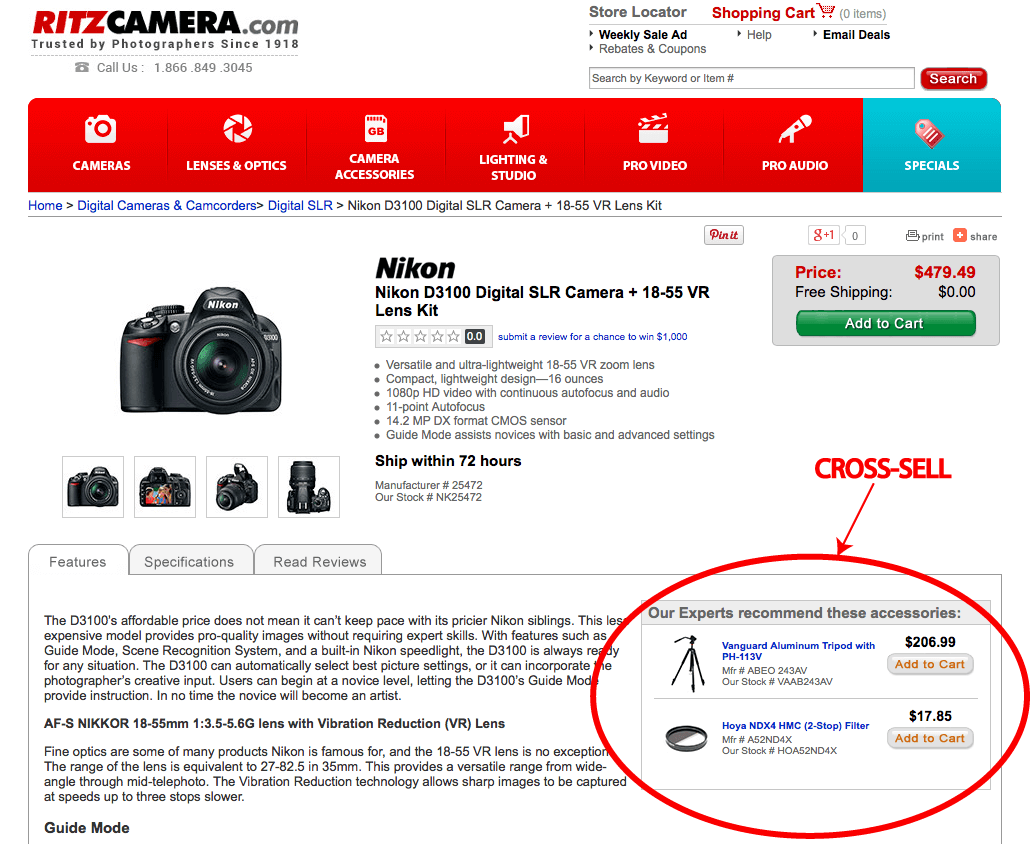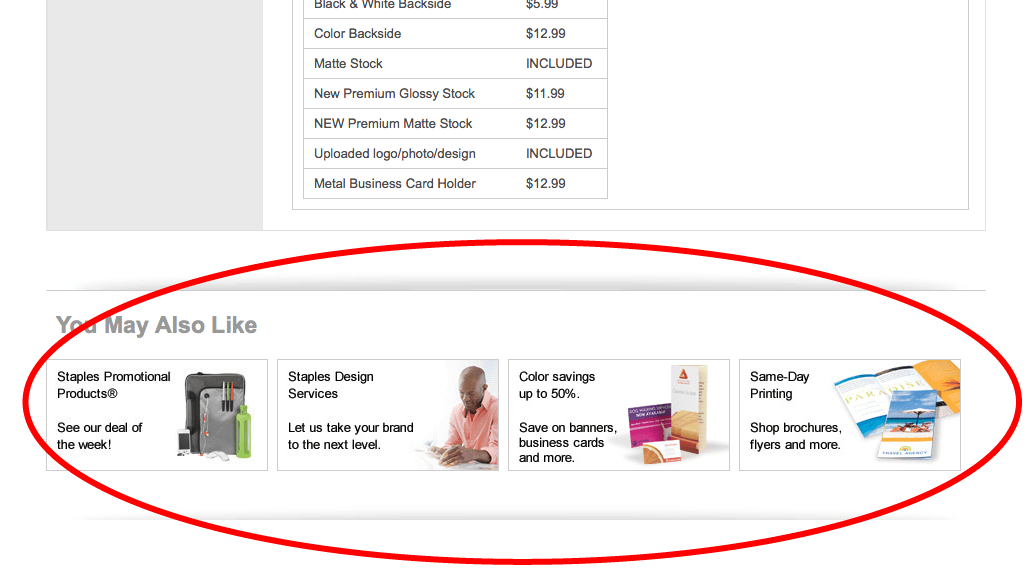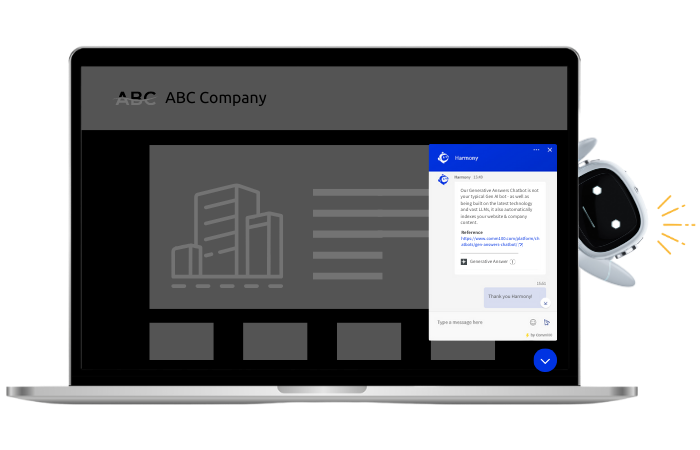This is the second article in a five part series on structuring your website for conversion.
Part 1: The Art and Science of Product Grouping
Part 2: 5 Key Guidelines for Upselling and Cross-Selling
Part 3: Keep Visitors Focused on Your Website
Part 4: Add a Human Touch to Your Website through Live Chat
Part 5: Understanding Customer Pain Points
The art of upselling and cross-selling has been around since humans began trading seashells for leather. Throughout history, many businesses have incorporated upselling and cross-selling as part of their selling strategy. McDonalds, for example, typically asks, “Would you like fries with that hamburger?” Unfortunately, the art of upselling and cross-selling isn’t always incorporated into ecommerce sites, and as a result, online merchants often leave money on the table.
This article suggests ways that you can incorporate the concepts of upselling and cross-selling directly in your ecommerce site and see a direct boost in your sales.
What Are Upselling and Cross-Selling?
First, a quick definition of upsell and cross-sell:
- An upsell occurs during a purchase, where the customer is made aware of the ability to get even more of what he or she was looking for. For example, you can book an economy class trip to Maui for $750, but for an additional $200, you can upgrade to business class and get more comfort.
- A cross-sell occurs either during or immediately after a purchase, where the customer is made aware of ways to accessorize the deal. For example, now that you’ve booked your trip to Maui, you can, for an additional $350, get four nights at an upscale hotel on the beach along with a rental car.
How to Upsell and Cross-Sell
The real art in upselling and cross-selling begins with an intimate understanding of your products and how they solve problems your customers may have. Your job is to understand these problems and align your product presentation to provide the solution.
For example, a customer arrives on your site looking for a mid-range SLR digital camera. His main concerns (problems) may be:
- Pixel count – Is it detailed enough to get the clarity he wants?
- Stability – Will he require a tripod for stability?
- Lens – Does the camera’s stock lens satisfy everything he needs, or should he upgrade to a higher quality zoom lens?
- Filters – Will he need UV, ND or split filters for his shots?
The above list provides is only a small sample of the concerns your customers may have upon arriving at your site. Your product pages should speak to these concerns and offer accessories (cross-sells) where necessary.
For example, the
Ritz Camera product page for the Nikon D3100, shown below, features two cross-sell opportunities to help accessorize the sale.
The above product page pro-actively identifies cross-sell opportunities.
The suggestions below can help guide you in your efforts to upsell and cross-sell products and services on your site.
-
-
List Opportunities
Make a list of all your products (or at least a large sub-set of your most popular products) and itemize all the corresponding upsell and cross-sell products. Of course, you can’t upsell something that is already at the top of the line, but you can always think of ways to accessorize (cross-sell) compatible products. Even if you’re just selling batteries or spare memory cards, the customer will always need something besides the product he’s currently purchasing. Then use this list to modify your product pages as appropriate.
Tip: Make it possible for customers to add accessories directly to the shopping cart (similar to the Ritz Camera example) without having to click off the page.
-
-
Track Progress
If possible, track the upsell and cross-sell sales on your site. This is important because it will provide an ROI (return on investment) on your upsell and cross-sell efforts. These efforts require an investment of your time, so you should probably understand how that investment is paying off. Like any other business decision, if the investment shows value, you may decide to put more effort into your upselling and cross-sell efforts.
Tip: The same algorithm that displays the upsell and cross-sell opportunities can also insert special hidden HTML codes that identify it as an upsell or cross-sell. When these items are placed in the shopping carts, you can read these codes to track your success.
-
Be Natural
Don’t overdo it! If you’re too overt about your upsell and cross-sell efforts, customers will feel as though you’re treating them as the next sale rather than as human beings. Your upsell and cross sell messages should never get in the way. See the example of the “You May Also Like” cross-sell ad from Staples below. This cross-sell actually appears well below the fold, and it only scrolls into view when you get to toward the end of ordering business cards.
Tip: As a general rule, don’t try to accessorize the deal until the customer decides to make the purchase.
-
Be Aware of Upsell Opportunities
Don’t give away your possible upsell opportunities. For example, you may advertise free shipping on all your products. Consider using your free shipping as an upsell opportunity instead. You could say something like, “Free shipping on all orders of $75 or more!” This may compel people with $50 dollar orders to add a few more accessories that they were going to purchase elsewhere, but now they’ll order them through your site just to get the discount on shipping.
Tip: Make a list of all your “freebies” and reconsider each one in terms of using it as an upsell driver.
-
Analyze Your Existing Sales
Use purchasing data from your existing customers to help determine cross-sell opportunities. Analyze what they put in their carts and see if you can draw relationships between the products. Keep in mind that this may not be possible if you’re not selling the right accessory products. If you suspect this is the case, you can poll some of your customers and ask them to help identify cross-sell opportunities.
Tip: Capture all shopping cart information, regardless of whether it’s a purchase or abandonment. This information provides useful insight into your customers’ minds. Use “Big Data” techniques (such as autocorrelation) to draw relationships between products and suggest cross-sell opportunities you may not have thought of.
By the way, if you haven’t already set up your ecommerce site, you may want to head over to the Business.com’s report for ecommerce software. It itemizes side-by-side comparisons of the most popular ecommerce software packages. You’ll see that all ecommerce packages offers upsell and cross-sell features, though some are add-on packages that may increase your software cost.
Recommended for you: Double Your Sales with Awesome Live Chat Upselling Techniques
Summary
Though the art of upselling and cross-selling products has been around for a long time, not all ecommerce merchants have been using it. You can put a lot of time and effort into identifying and implementing these features on your site, but if done properly, the effort will yield more sales. This article describes how you might implement upsell and cross-sell features on your site and identifies some key points to guide your way.
In the next article in this series, we’ll discuss ways to keep your visitors engaged on your website using clear and focused messaging.
Download now: How to Create a Dynamic Live Chat Strategy
You’ve defined your live chat objectives. Next you need to find a way to implement your live chat objective effectively. This eBook provides you with several perspectives in developing the strategy and making full use of your live chat solution.
Download Now
eBook









